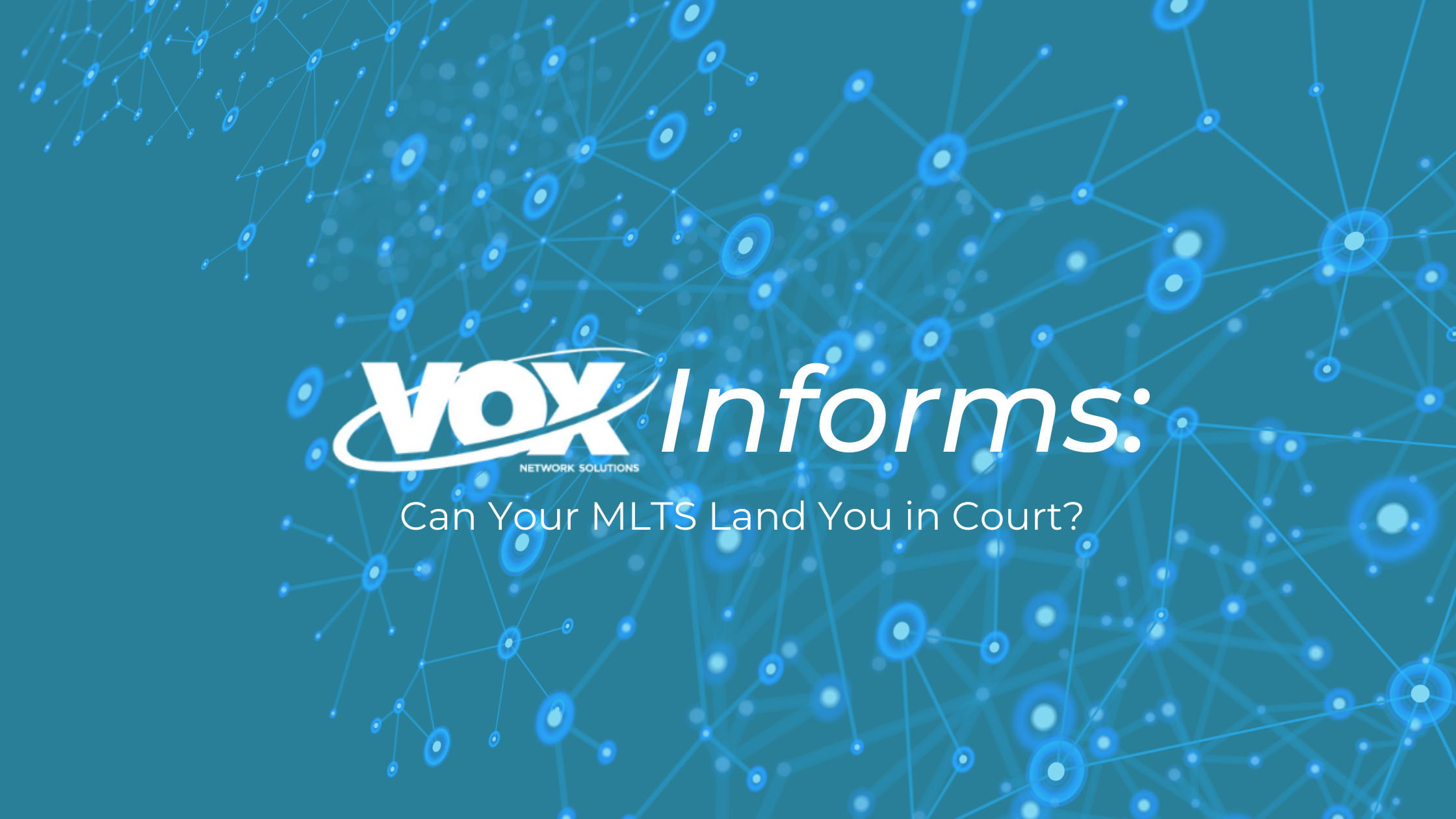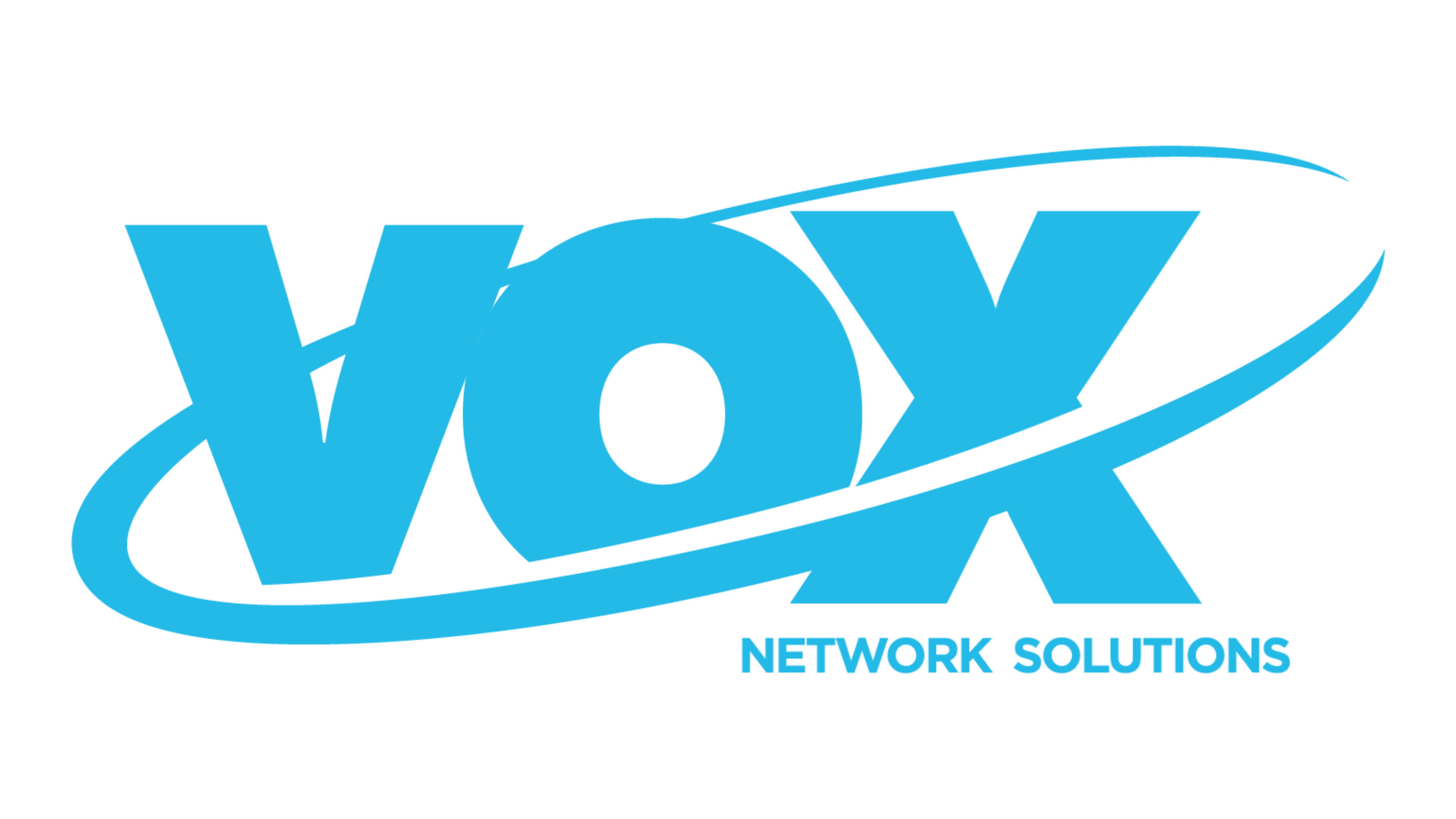VOX-Informs: Can Your MLTS Land You in Court?

How much do you know about E911? Probably a lot, given how integral this system has been to America for… quite a long time, actually. It’s been around since 1968 in a rudimentary fashion—the first ever 911 system. We got the enhanced version in 1978, hence the E in the E911. But we’re not here to give you a history lesson. Not at all, actually. We’re here because of the huge probability that your current Multi-Line Telephone System (MLTS) could land you in court. Or it could cost your business large sums of money in fines. That’s not good, is it?
So, imagine your finances or business reputation getting such a hit? What would your competitors do with this information? You could survive having to pay fines, but they could use such events to hurt your reputation. We can’t have that.
That’s why we’re here. We want to inform and help you.
Before we continue though, here’s a quick rundown of how the E911 system works, just to keep you in the know. In case of an emergency, people call 911, the call is then routed to a Public Safety Answering Point (PSAP) which is a government-run call center, where a specially trained dispatcher takes the call; then, using the information sent to their computer via the telephone company, they direct the authorities to the exact location the call came from. Pretty cut-and-dried, yes?
That’s all well and good but, why are we directing your attention towards the MLTS in particular?
A MLTS is a phone system that can handle two or more phone calls at the same time. It lets employees put calls on hold, dial internal or external numbers, then go back to the initial line. It’s pretty handy in the work environment, almost necessary.
Laws & Regulations
Back in 2013, a woman named Kari Hunt was murdered by her estranged husband in a motel room in Texas. While her child tried calling 911, she had no idea that the motel used a phone system that required her to press 9 before dialing 911, which was how the system made outbound calls. This cost the poor woman her life, and the child her mother. In response to this heinous act, Congress passed a law in 2018. The aim of the Kari Law was to eliminate this unnecessary addition and delay, and it states that a MLTS should be able to directly dial 911 and possess 911-related notification capabilities.
We’d also like to direct your attention to Ray Baum’s Act, which dictates that all “dispatchable location” information is made available to the PSAP; the Federal Communications Commission (FCC) defines a dispatchable location as a location delivered to the PSAP with a 911 call. It’s meant to contain a specific and detailed address to help emergency services get to where they’re needed.
The thing is, the deadline for compliance to the aforementioned regulations is slowly creeping in - actually, slowly is an understatement. The FCC did set multiple deadlines, depending on the tech used to make the call, but for those using on-premises software and off-premises devices, the deadline is January 6th 2022. It’s coming in hot, and your organization might not be prepared for it.
And because the issue is taken seriously, you can imagine the legal consequences you can end up buried under. Nobody wants their organization represented as they get dragged in courts over something so easily avoided.
So, does your system meet the requirements? Or is this news to you? Either way, why don’t we discuss the options available to you? Just in case you wanted to make sure you’re compliant or just to know how to join the “safe from lawsuits” club.
Decisions, Decisions
So, there are two options you can pick from.
Option A
Let’s start with the easiest form: Cloud-based solutions.
It’s no surprise really that the first option available is cloud-based given how many problems “the cloud” is already solving across multiple industries. This is further highlighted during the COVID-19 crisis, making the jump to cloud the answer to a variety of issues.
Ideally, you want a system with built-in software that makes sure the related information goes to both your internal staff AND to the public safety officials, i.e., the outbound 911 call goes through to the authorities, without the need for any extra steps, just dialing the number. Alongside an address -as detailed as the Ray Baum’s act specifies- and the persons that could act in the organization itself are also notified, the security desk for example.
Option B
If you’re using an on-premises non-cloud-based system, your business just doesn’t see a jump to cloud-based being viable right now. You can find a solution that could help.
But, truth be told, you might want to reconsider jumping to the cloud as the on-premises systems are starting to show their age.
Cloud systems don’t need the user to be on-premises, which is really more viable in the current environment; most employees now work from home or in hybrid work environments. But if you can’t make the jump, don’t worry, we have recommendations for you in that regard as well.
Recommendations
You know that we, at VOX, like nothing more than to be helpful, and while it would have been enough to just give you the warning and a general tip, we don’t think that suits our culture of going above and beyond. So, how about we offer you some more concrete solutions and recommendations?
Let’s start with our first category, the cloud-based systems.
These systems are more common in the current landscape, as such solutions for a cloud-based MLTS are more readily available, but this puts you at risk of picking the wrong option, or one that’s not compatible with your business model. We know each business is unique, but we can still offer you some friendly “general” advice - who doesn’t like that?
There are two prominent Cloud-based systems that could really solve your issue for you. Cisco Webex and Avaya SENTRY.
Both of them have the solution available on their cloud offers, which already establishes that they’re aware and informed. That is reassuring because it means you’re dealing with pros.
In order not to overwhelm you, let’s discuss one of our recommendations: Avaya SENTRY, here’s what it can do for you, in short:
- Tracking IP devices on Avaya platforms.
- The alerts are detailed, and they’re based on where the call was made from.
- If the alert is not acknowledged, it gets escalated.
- It features screen pop-ups that include detailed information regarding the station, floor plan maps and other relevant information which helps to make the work easier for emergency responders.
Pretty comprehensive.
But that’s for those businesses that use cloud-based MLTS and seek a solution for them, how about enterprises that run an on-premises MLTS?
There are several recommendations we can make. Let’s discuss two of them: 911 Secure & 911 Inform. Here are 3 key distinctions between them.
Let’s talk about 911 Secure first:
- Requires no charges per endpoint, bonus.
- It has Avaya’s vote due to a proven track record with them.
- It requires Direct Inward Dialing (DID) for remote workers.
What about 911 Inform?
- It has a lower price point
- Offers dynamic location updates
- Does not require DID for remote workers
Next Steps
So, now that you’re aware of the situation and who to turn to if you want to try handling this on your own, you could struggle to make a choice, or worse, end up making one that doesn’t fit your business at all.
You could stick to your systems and not make an update at all, but then again, the FCC is really touchy about these new regulations and will monitor any violations to these 911 laws like hawks.
We know that this is an overwhelming topic and there is a lot of information that we have not covered. Lucky for you, we can help you explore this topic further. We will be throwing a TechTalk soon dedicated to unpacking this whole topic titled “Demystifying Kari’s Law & the RAY BAUM Act”.
What it does is in the title, and a little extra. We will be discussing the FCC regulations and the MLTS requirements in further detail, and we will have key speakers to answer all your questions and offer you more E911-related solutions. We hope to see you there.
We will be updating you with further information down the line, so keep an eye out for our emails and on our socials. Or, you can just contact us yourself! We can set you up with a cloud-based system that already has all that you need built-in or offer you alternatives for your on-premises system. Either way, we’ll cover you regarding this whole E911 business.
Think about it, but don’t take too long—remember, the deadline for your compliance is January 6th 2022 and it’s only getting closer.


